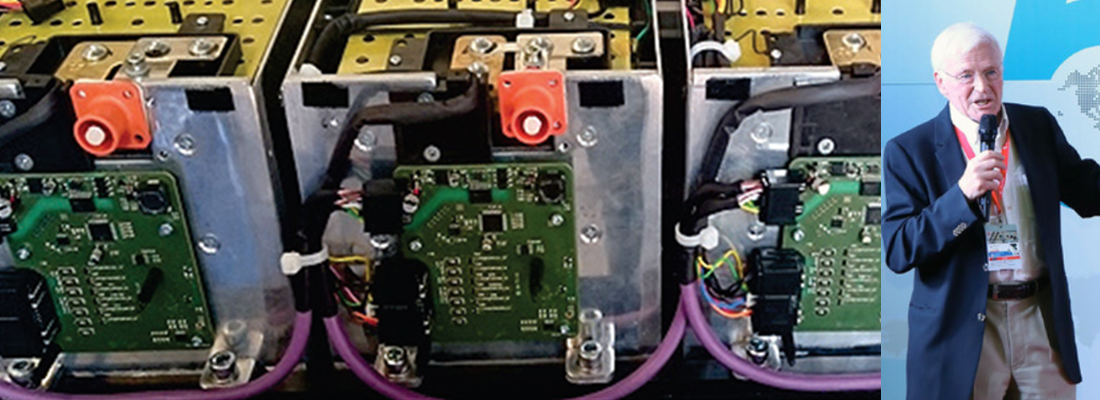Engine of growth
A new report finds the circular economy could be a powerful driver for growth, job creation and environmental stewardship in emerging economies - if they can harness its potential. Andrew Stone takes a look.
Driving the growth of the circular economy, including remanufacturing activity at mass scale, may now be within the grasp of developing economies and could enable them to compete in a higher tech world, according to a new report from UK-based thinktank Chatham House. “It appears to offer a credible industrialisation pathway in an era of digital disruption and automation. It will help create value out of challenges, such as resource scarcity and pollution, that could otherwise undermine development gains,” says A Wider Circle? The Circular Economy in Developing Countries.
New possibilities
The report’s authors, Felix Preston and Johanna Lehne, suggest that reman could now be at a tipping point. This is thanks not just to new technology that is now ripe for adoption by emerging economies (see box: How digital innovation could drive emerging market remanufacturing) - but also because policy makers in emerging economies and their development partners have become alive to its possibilities in recent months and years. “The circular economy is rising up the development agenda,” says the report. “[It] could develop into a powerful umbrella term, helping to build political momentum around a set of ideas that can be applied in and tailored to multiple sectors or cities.” Regional remanufacturing and reprocessing hubs could emerge all over the world if the added value from economies of scale exceeds the cost of transport, it suggests. Such a scaled-up circular economy also has the potential to help industrial sectors within emerging economies mature and rise further up the value chain. And the potential benefits of a growing circular economy are more than economic for the world’s poorer nations. It will also afford more sustainable growth, more resilience and the ability to contribute to global climate goals. Remanufacturing is one of the promising elements of the circular economy for emerging economies, says the report. A sector which has hitherto been seen as the domain of wealthier established economies is now attracting rapidly growing interest within developing nations.
Professionalising reman can play a positive role in heading off crises in both health and waste. For example, according to the report an estimated six million to 16 million people are exposed to dangerous levels of lead at primitive lead battery recycling plants. This could be remedied by promoting reman activity with higher standards and a more skilled workforce.
A head start
Developing nations are already generally better disposed to developing on such lines, says the Chatham House report, since much economic activity will typically already revolve around repair and re-use in less wealthy ‘make-do-and-mend’ economies. There are also arguably great opportunities in remanufacturing in emerging economies since such activity is typically labour-intensive and is often resistant to easy automation. “The remanufacturing and repair of products tend to require more labour than does manufacturing from raw materials,” the report notes. “Deconstruction, a necessary prerequisite to scaling up the reuse of building materials, is typically more labour-intensive than demolition.” The report even suggests that by encouraging a circular economy to take root, developing nations could leapfrog the more resource-intensive phases of economic development that wealthier nations have historically had to undergo. With young, rapidly burgeoning populations and fast-growing middle classes, the imperative for emerging economies to embrace the growth of a circular economy should increase. Resource and waste pressures will rise hand-in-hand with growing consumption as incomes rise.
Barriers to growth
It is not yet clear which path emerging economies will take, however. “Middle-class citizens in the developing world are already starting to consume more and reuse less, heading in the direction of wealthier people in developed countries,” says the report. But it adds: “It is possible that technical innovation and new business models could transform this pathway, decoupling economic growth from resource use. There is already evidence in emerging economies that future societies will need fewer resources than anticipated.” But the path to a scaled-up circular economy will not be smooth: there are multiple challenges to realising this potential and creating higher-value circular economy activity is not easy. For example, growing a domestic circular economy will often involve - or even depend on - international co-operation. “Unlocking the value of this trade will depend on lowering non-tariff barriers, in particular addressing the lack of clarity on the rules that apply to different waste and secondary materials; these rules currently vary between countries,” says the report.
Businesses themselves face challenges too. Larger emerging economy incumbents may find it hard to embrace new business models and new behaviours required of them, while the smaller firms that could lead such disruption often lack access to the data, logistics and expertise needed to make such ventures a success. The report also acknowledges that, although emerging economies may already have a more circular economy approach, this will not automatically mean they will adapt well to high-end reman processes. “More ‘circular’ behaviour is often born out of economic necessity, while higher-value opportunities for reuse and remanufacturing are relatively rare.”
Race against time
Developing nations are also in a race against time to embrace new opportunities in reman - given the looming economic disruption coming from robotics, greater automation, and advanced manufacturing. The increasingly intensive and shared use of resources driven by new platform businesses - for example, car- and ride-sharing services - may also reduce opportunities for remanufacturing in future. Much more work needs to be done to explore how development organisations and partner countries can help realise circular economy potential, particularly around establishing trade partnerships, regional hubs and pilot zones, says the report. But time is of the essence. There is “a limited window of opportunity” in which to shape the emerging circular economy agenda and at present much activity is taking place on a trial project basis rather than being part of a considered and overarching circular economy strategy. While developing countries may well turn out to have a competitive advantage in certain parts of the circular economy, particularly where abundant, low-cost labour is needed, such as in the reuse and recycling of textiles, this is unlikely to be the case across the remanufacturing sector. “Remanufacturing requires a skilled workforce…for the most part, it is too early to tell how this will play out in developing-country contexts,” the report warns.
How digital innovation could drive emerging market reman
The digital revolution is one of the most significant reasons why developing economies might be able to embrace new circular economy opportunities - not least among them remanufacturing.
These technologies include the ability to track physical assets using the emerging generation of cheap, smart sensors as well as the use of predictive analytics. “Digital platforms for secondary products and new, more service-oriented business models could provide opportunities to people in all segments of society, especially in reverse logistics,” says the report. The capabilities these offer can help optimise any repair, upgrading, remanufacturing and recycling processes, says the report. “‘Trace and return’ processes already allow firms to track their products while in use, optimising the timing of repairs and upgrades,” the authors point out. “Online marketplaces for waste products and materials are being piloted in several US cities. The so-called ‘internet of things’ will bring a step-change in our ability to know where materials and products are in the economy. Far from leaving this trend to OECD countries, companies in developing and emerging economies – such as Alibaba, Tencent and Huawei in China, or Safaricom in Kenya – are well placed to capitalise on it. Many companies are introducing technologies that can trace products along supply chains with end-to-end certification – including using distributed-ledger technology to help curb corruption and ensure environmental integrity.”
Share your remanufacturing stories with us
Do you have an innovation, research results or an other interesting topic you would like to share with the remanufacturing industry? The Rematec website and social media channels are a great platform to showcase your stories!
Please contact our Brand Marketing Manager.
Are you an Rematec exhibitor?
Make sure you add your latest press releases to your Company Profile in the Exhibitor Portal for free exposure.






